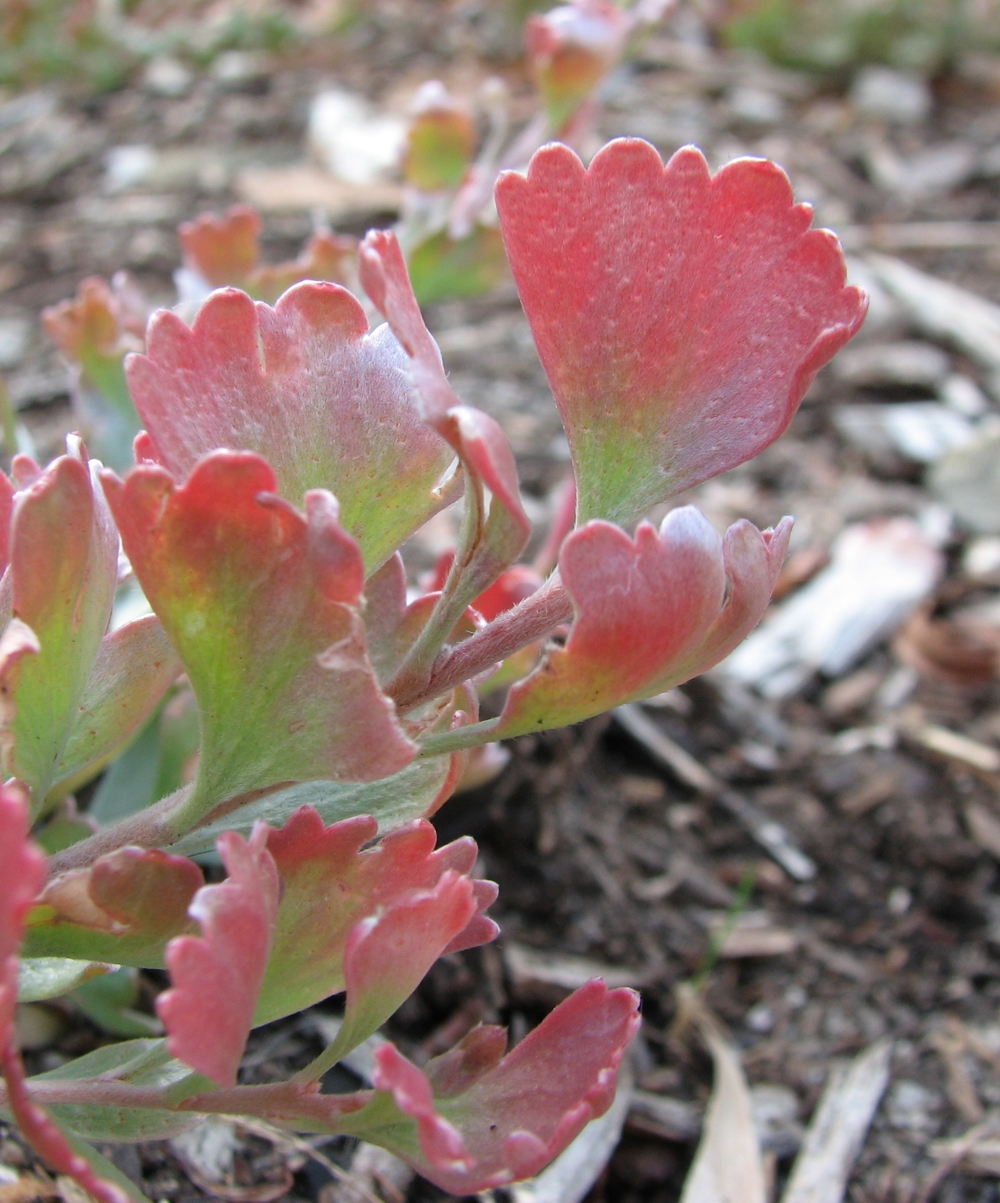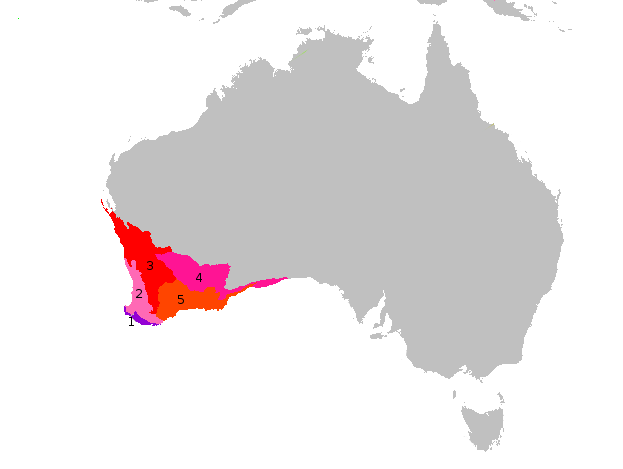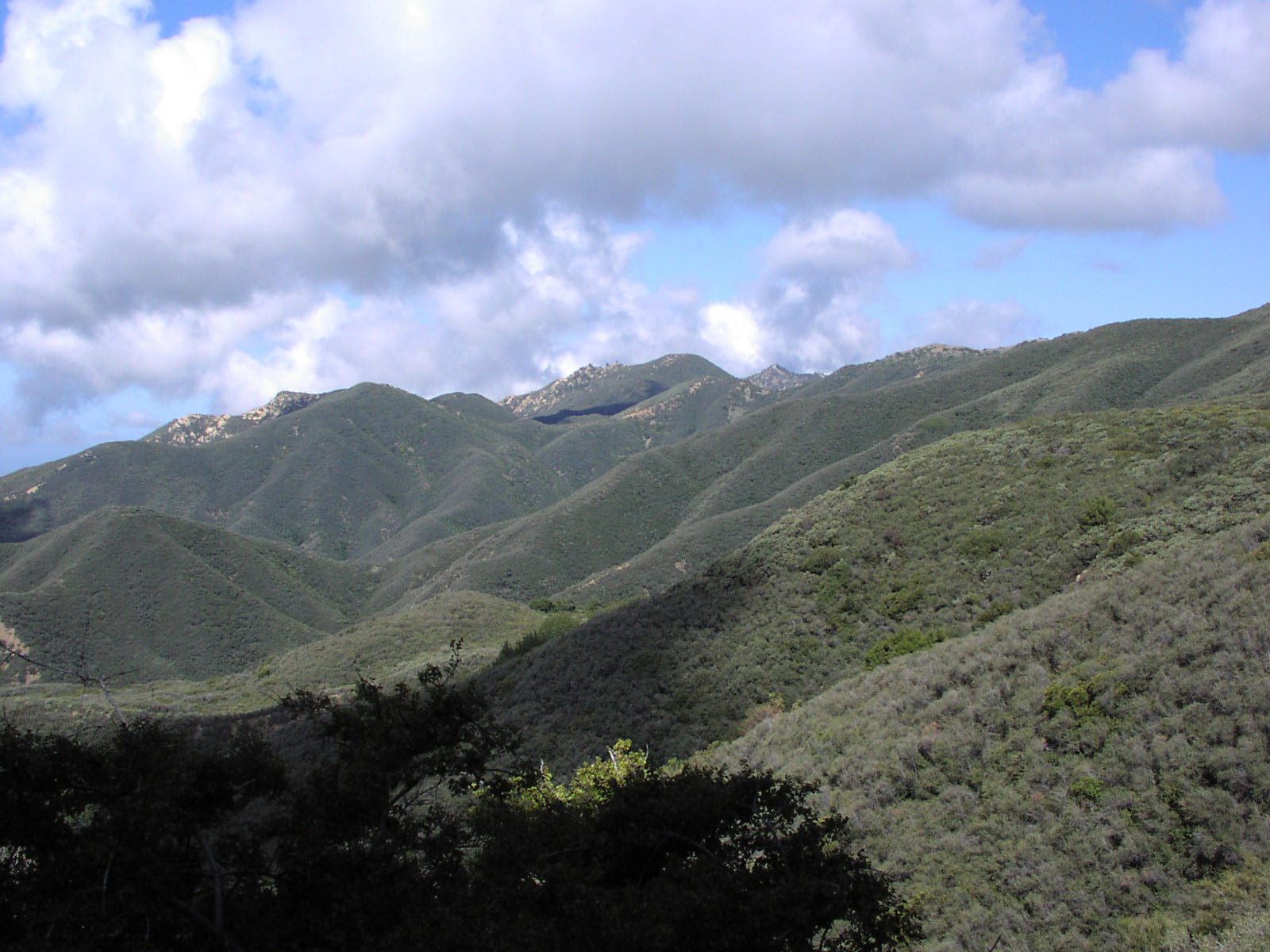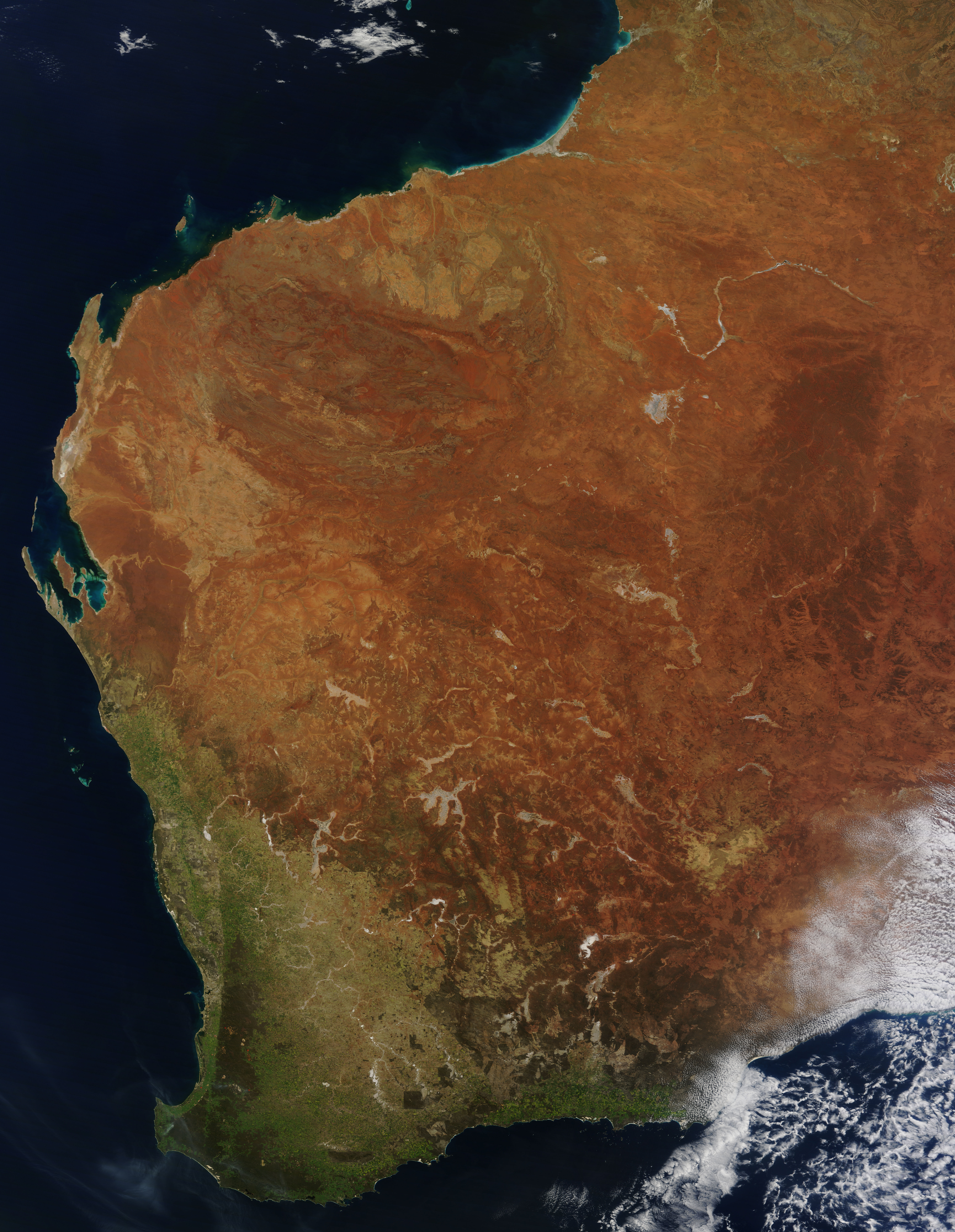|
Kwongan
Kwongan is a plant community found in south-western Western Australia. The name is a Bibulman Aboriginal term of wide geographical use defined by Beard (1976) as Kwongan has replaced other terms applied by European botanists such as sand-heide (Diels 1906) or sand heath (Gardner 1942), giving priority to the language of people who have lived continuously in the southwest for more than 50,000 years. Recent archeological evidence shows occupation of the Kwongan for at least 25,500 years. Thus, kwongan has come again into common usage for the Southwest Australian Floristic Region's shrubland vegetation and associated countryside, equivalent to South Africa's fynbos, California's chaparral, France's maquis and Chile's matorral as seen in these other regions of the world experiencing a Mediterranean climate. Etymology To reflect contemporary orthographies, linguists strictly spell kwongan as (Douglas 1976, Dench 1994), or (von Brandenstein 1988). As with so many other aspect ... [...More Info...] [...Related Items...] OR: [Wikipedia] [Google] [Baidu] |
Adenanthos Cuneatus Prostrate Form
''Adenanthos'' is a genus of Australian native shrubs in the flowering plant family Proteaceae. Variable in habit and leaf shape, it is the only genus in the family where solitary flowers are the norm. It was discovered in 1791, and formally published by Jacques Labillardière in 1805. The type species is ''Adenanthos cuneatus'', and 33 species are recognised. The genus is placed in subfamily Proteoideae, and is held to be most closely related to several South African genera. Endemic (ecology), Endemic to Australia, its centre of diversity is southwest Australia, southwest Western Australia, where 31 species occur. The other two species occur in South Australia and western Victoria (Australia). They are mainly pollinated by birds. Description Habit The growth habits of ''Adenanthos'' species range from prostrate shrubs to small trees, with most species occurring as erect shrubs. There are two basic growth forms. Plants that lack a lignotuber have a single stem. Such plants usua ... [...More Info...] [...Related Items...] OR: [Wikipedia] [Google] [Baidu] |
Southwest Australia
Southwest Australia is a biogeographic region in Western Australia. It includes the Mediterranean-climate area of southwestern Australia, which is home to a diverse and distinctive flora and fauna. The region is also known as the Southwest Australia Global Diversity Hotspot. Geography The region includes the Mediterranean forests, woodlands, and scrub ecoregions of Western Australia. The region covers 356,717 km2, consisting of a broad coastal plain 20–120 kilometres wide, transitioning to gently undulating uplands made up of weathered granite, gneiss and laterite. Bluff Knoll in the Stirling Range is the highest peak in the region, at 1,099 metres (3,606 ft) elevation. Desert and xeric shrublands lie to the north and east across the centre of Australia, separating Southwest Australia from the other Mediterranean and humid-climate regions of the continent. Climate The region has a wet-winter, dry-summer Mediterranean climate, one of five such regions in the worl ... [...More Info...] [...Related Items...] OR: [Wikipedia] [Google] [Baidu] |
Wongan Hills
Wongan Hills is a range of low flat-topped hills in the Avon Wheatbelt bioregion of Western Australia. It is located at , in the Shire of Wongan–Ballidu. History The range was first recorded in 1836 by Surveyor General of Western Australia John Septimus Roe. The area was settled by the 1900s (decade), and in 1911 the town of Wongan Hills was established and named after the range. Etymology "Wongan" is derived from the Indigenous Australian name "wangan-katta", "wankan" and "woongan". "Katta" is known to mean "hill", but the meaning of "wongan" is uncertain. It may be related to "kwongan", an indigenous word for sandplain, or "whispering", in which case "wongan katta" would mean "whispering hills". Flora and fauna The hills are biologically significant because they contain the largest remaining single area of natural vegetation in northern parts of the wheatbelt. The hills are home to remnant woodlands of salmon gum ('' Eucalyptus salmonophloia''), York gum (''Eucalyptus lo ... [...More Info...] [...Related Items...] OR: [Wikipedia] [Google] [Baidu] |
Chaparral
Chaparral ( ) is a shrubland plant plant community, community found primarily in California, southern Oregon, and northern Baja California. It is shaped by a Mediterranean climate (mild wet winters and hot dry summers) and infrequent, high-intensity crown fires. Many chaparral shrubs have hard sclerophyllous evergreen leaves, as contrasted with the associated soft-leaved, drought-deciduous, scrub community of coastal sage scrub, found often on drier, southern-facing slopes. Three other closely related chaparral shrubland systems occur in southern Arizona, western Texas, and along the eastern side of central Mexico's mountain chains, all having summer rains in contrast to the Mediterranean climate of other chaparral formations. Etymology The name comes from the Spanish language, Spanish word , which translates to "place of the scrub oak". ''Scrub oak'' in turn comes from the Basque language, Basque word , which has the same meaning. Overview In its natural state, chaparral is ... [...More Info...] [...Related Items...] OR: [Wikipedia] [Google] [Baidu] |
Mediterranean Forests, Woodlands, And Scrub In Australia
The Mediterranean Sea ( ) is a sea connected to the Atlantic Ocean, surrounded by the Mediterranean basin and almost completely enclosed by land: on the east by the Levant in West Asia, on the north by Anatolia in West Asia and Southern Europe, on the south by North Africa, and on the west almost by the Morocco–Spain border. The Mediterranean Sea covers an area of about , representing 0.7% of the global ocean surface, but its connection to the Atlantic via the Strait of Gibraltar—the narrow strait that connects the Atlantic Ocean to the Mediterranean Sea and separates the Iberian Peninsula in Europe from Morocco in Africa—is only wide. Geological evidence indicates that around 5.9 million years ago, the Mediterranean was cut off from the Atlantic and was partly or completely desiccation, desiccated over a period of some 600,000 years during the Messinian salinity crisis before being refilled by the Zanclean flood about 5.3 million years ago. The sea was an important ... [...More Info...] [...Related Items...] OR: [Wikipedia] [Google] [Baidu] |
Biogeography Of Western Australia
Western Australia occupies nearly one third of the Australia (continent), Australian continent. Due to the size and the isolation of the state, considerable emphasis has been made of these features; it is the second largest administrative territory in the world, after Sakha Republic, Yakutia in Russia, despite the fact that Australia is only the sixth largest country in the world by area, and no other regional administrative jurisdiction in the world occupies such a high percentage of a continental land, land mass. Its capital city, Perth, is also considered to be amongst the world's most isolated, being closer to Jakarta in Indonesia, than to the Australian national capital in Canberra. Introduction Western Australia's geology has components that are considered some of the oldest and most recent. The oldest minerals of the world have been discovered at the Jack Hills, and the Yilgarn craton of the Great Western Plateau, which occupies most of the state, has been above s ... [...More Info...] [...Related Items...] OR: [Wikipedia] [Google] [Baidu] |
University Of Western Australia
University of Western Australia (UWA) is a public research university in the Australian state of Western Australia. The university's main campus is in Crawley, Western Australia, Crawley, a suburb in the City of Perth local government area. UWA was established in 1911 by an act of the Parliament of Western Australia. UWA is the oldest university in Western Australia (WA) and the sixth-oldest in Australia. It is classed as one of the "sandstone universities", an informal designation given to the oldest university in each state. UWA is a member of the Group of Eight (Australian universities), Group of Eight, which consists of the eight most research-intensive and best-ranked Australian universities. UWA is also a member of the international Matariki Network of Universities. History The university was established in 1911 following the tabling of proposals by a royal commission in September 1910. The original campus, which received its first students in March 1913, was on ... [...More Info...] [...Related Items...] OR: [Wikipedia] [Google] [Baidu] |
Platysace Deflexa
''Platysace deflexa'', known by its Noongar name youlk or as Ravensthorpe radish, is a species of flowering plant in the family Apiaceae and is endemic to the south-west of Western Australia. It is a tuberous, perennial herb or shrub with linear leaves and white flowers in a compound umbel. Description ''Platysace deflexa'' is a tuberous, perennial herb or shrub that typically grows to a height of and has wand-like branches. Its leaves are broadly lance-shaped to linear, usually long, the upper leaves almost round. White flowers are borne in compound umbels with 3 to 6 rays on a long, thin peduncle, each ray with a partial umbel. Flowering occurs from December to January and the fruit is very flat and about long and ribbed. Taxonomy This species was first formally described in 1849 by Nikolai Turczaninow who gave it the name ''Trachymene deflexa'' in the journal ''Bulletin de la Société Impériale des Naturalistes de Moscou'' from specimens collected by James Drummond. I ... [...More Info...] [...Related Items...] OR: [Wikipedia] [Google] [Baidu] |
Daisy Bates (author)
Daisy May Bates, CBE (born Margaret May O'Dwyer; 16 October 1859 – 18 April 1951) was an Irish-Australian journalist, welfare worker and self-taught anthropologist who conducted fieldwork among several Aboriginal groups in western and southern Australia. Born in Country Tipperary, Ireland in 1859, Bates migrated to Australia in 1883 where she married three times (at least one of which was bigamous) and gave birth to a son. She returned to England in 1894 and worked as a journalist and editor. She migrated to Western Australia in 1899, where she bought a cattle station and developed an interest in the culture and welfare of Aboriginal Australians. She published a number of articles on Aboriginal issues and from 1904 to 1910 was employed by the Western Australian government to collect ethnographic information on the Aboriginal people of that state. Her research and field work was published posthumously in 1985 as ''The Native Tribes of Western Australia''. Bates was appoint ... [...More Info...] [...Related Items...] OR: [Wikipedia] [Google] [Baidu] |
Wiilman
The Wiilman people are an Aboriginal Australian people of the Noongar group, from the Wheatbelt, Great Southern and South West regions of Western Australia. Variant spellings of the name include Wilman, Wirlomin, Wilmen and Wheelman. ''Wiilman'' is the endonym. Language Their original language, also known as ''Wiilman'', is extinct and poorly documented, but is generally believed to have been part of the Nyungar subgroup. Country The Wiilman originally occupied an estimated of territory, taking in the future sites of Collie, Boddington, Pingelly, Wickepin, Narrogin, Williams, Lake Grace, Wagin, and Katanning. The northern boundary of the Wiilmen is from around Wuraming, through Gnowing (north of Wandering) and Dattening to Pingelly. The eastern boundary included Wickepin, Dudinin and Lake Grace. In the south, the boundary of Wiilmen country included Nyabing (originally Nampup), Katanning, Woodanilling and Duranillin. Mythology Ethel Hassell wrote extensiv ... [...More Info...] [...Related Items...] OR: [Wikipedia] [Google] [Baidu] |
Edward John Eyre
Edward John Eyre (5 August 181530 November 1901) was an English land explorer of the Australian continent, colonial administrator, Lieutenant-Governor of New Zealand's New Munster province, and Governor of Jamaica. Early life Eyre was born in Whipsnade, Bedfordshire, shortly before his family moved to Hornsea, Yorkshire, where he was christened. His parents were Rev. Anthony William Eyre and Sarah (née Mapleton).Geoffrey Dutton (1966),Eyre, Edward John (1815–1901), '' Australian Dictionary of Biography'', Volume 1 (Australian National University), accessed 25 October 2018. After completing grammar school at Louth and Sedbergh, he moved to the colonial settlement of Sydney, Australia, rather than join the army or go to university. He gained experience in the new land by boarding with and forming friendships with prominent gentlemen and became a flock owner when he bought 400 lambs a month before his 18th birthday. In South Australia In December 1837, Eyre started drovi ... [...More Info...] [...Related Items...] OR: [Wikipedia] [Google] [Baidu] |
Great Australian Bight
The Great Australian Bight is a large oceanic bight (geography), bight, or open bay, off the central and western portions of the southern Coast, coastline of mainland Australia. There are two definitions for its extent—one by the International Hydrographic Organization (IHO) and another by the Australian Hydrographic Service (AHS). The bight is generally considered part of the Indian Ocean, although the AHS classifies it as part of the Southern Ocean. Its coastline is characterized by cliff faces and rocky capes, making it an ideal location for whale-watching. This oceanic feature was first encountered by European explorers in 1627, and was accurately charted by English navigator Matthew Flinders in 1802. The Great Australian Bight came into existence about 50 million years ago when the supercontinent Gondwana broke apart, separating Antarctica from Australia. The Bight's waters are highly Biodiversity, biodiverse, especially in zooplankton, due to specific ocean currents. H ... [...More Info...] [...Related Items...] OR: [Wikipedia] [Google] [Baidu] |









